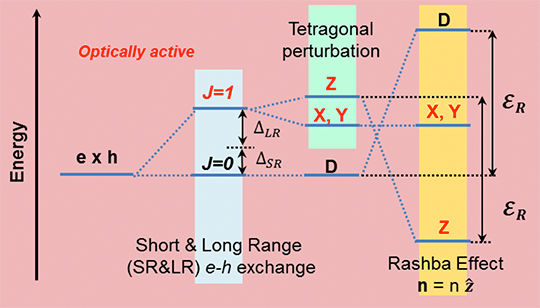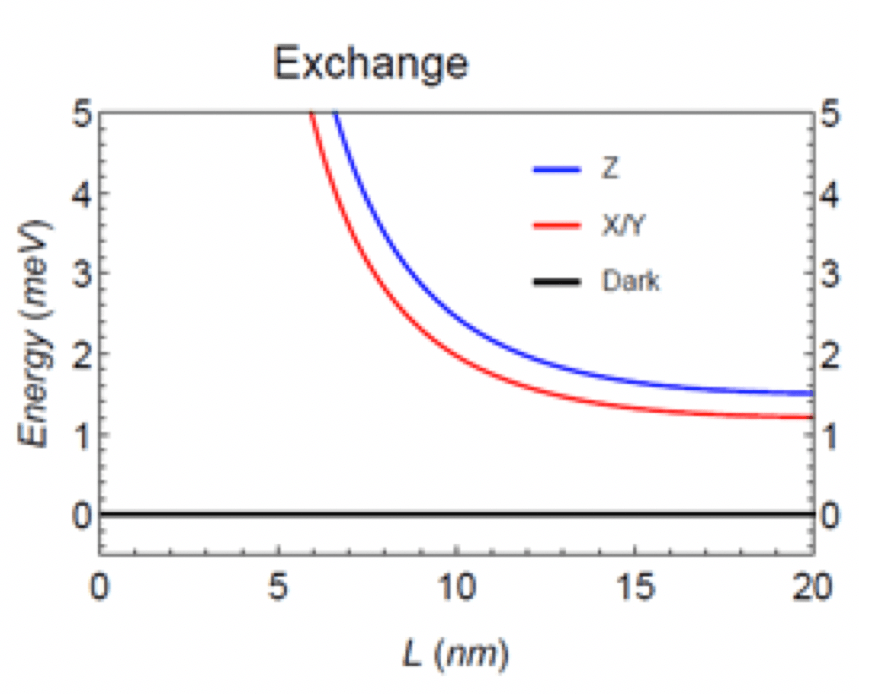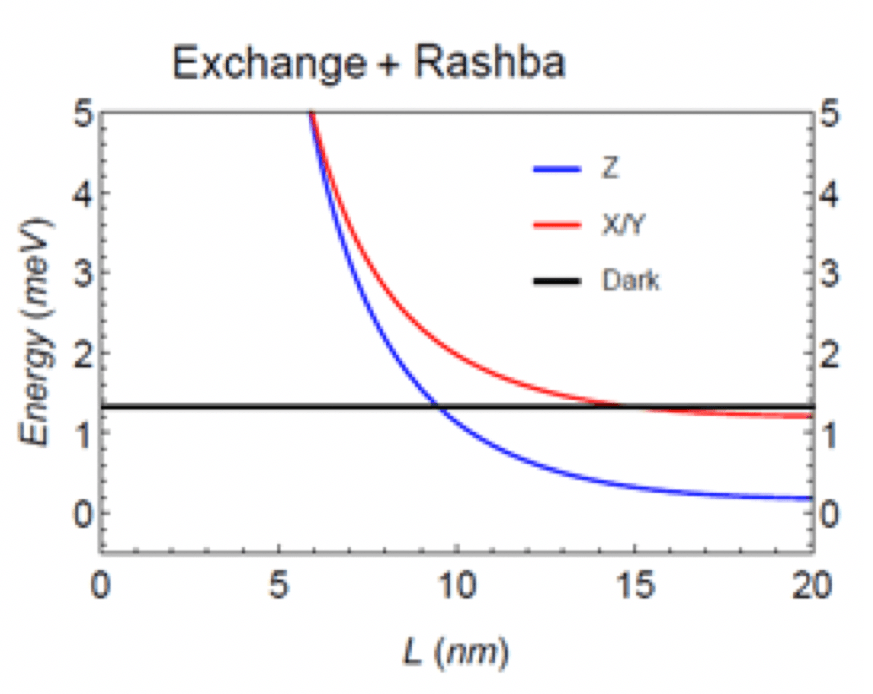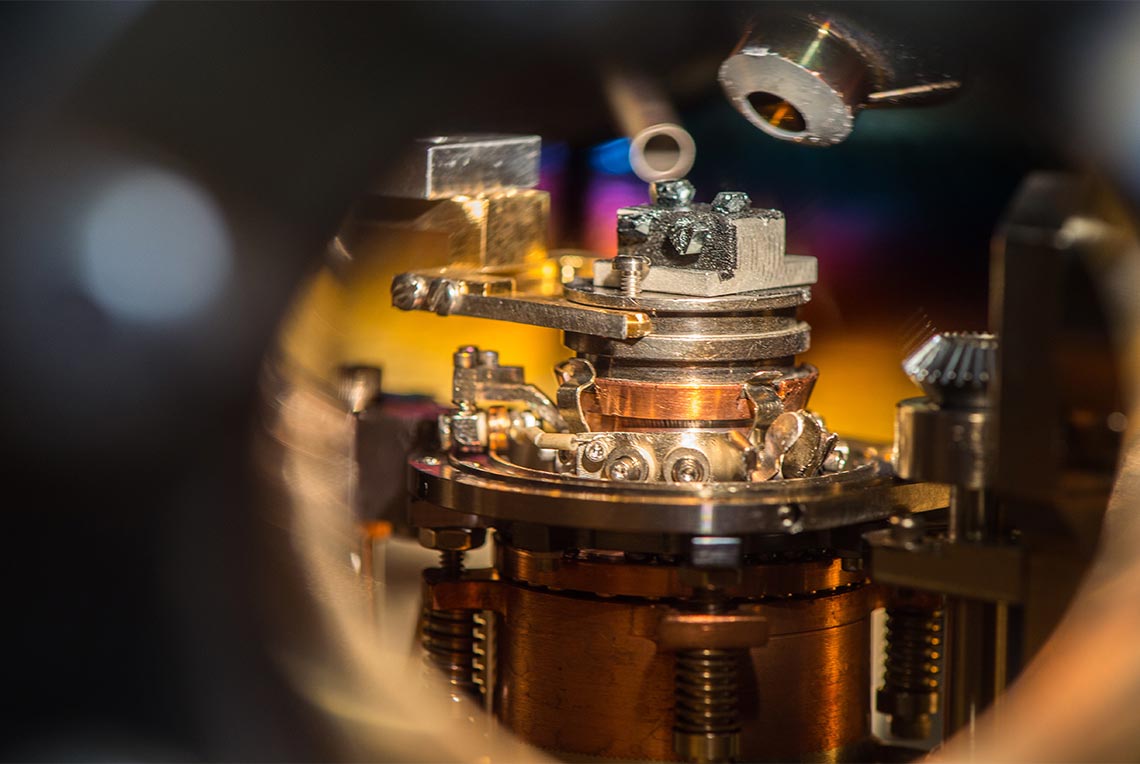Exciton Fine Structure in CsPbBr3 Nanocrystals
May 15, 2019
No other known semiconductor system has the lowest energy state being bright implying that these systems are ideal for applications that require fast and bright radiative emission.
Scientific Achievement
We developed a model for size dependent exciton fine structure in perovskite nanocrystals (NCs). We demonstrate the level order within the optically active triplet in tetragonal CsPbBr3 NCs requires Rashba splitting to explain experimental data.
Significance and Impact
Understanding the role of structure on level ordering optical selection rules is required in order to control their optical, electrical, and spin properties.
Research Details
- Model accounts for short- and long-range exchange, crystal field splitting, Rashba splitting, and e/h correlated motion.
- Model is developed for the range of intermediate quantum confinement to match experimental data.
- Developed understanding of size-dependent change in level ordering for different Rashba splitting strengths.
Related People
Peter Sercel
Peter Sercel Research, LLC.

Figure 1. Level diagram for tetragonal CsPbBr3 NC. The upper fine structure level is the Z exciton in the absence of Rashba splitting, Inclusion of Rasha terms reverses the level order, matching experiment.


Figure 2. Size-dependent fine structure in tetragonal CsPbBr3 NCs, calculated; Right, with Rashba terms. On the right the ground state is optically allowed for large NCs. The Z vs X/Y level order reverses from left to right as does the D/Z order.









